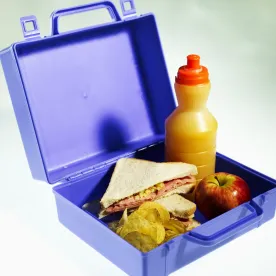For most employers, knowing whether employees should be paid or not paid for lunches or breaks is a fairly straightforward determination. However, some nuances in this area pose landmines, if you aren’t careful. In Babcock v. Butler Cty., the United States Court of Appeals for the Third Circuit – the federal appellate court with jurisdiction over Pennsylvania – was recently faced with one of these nuances in evaluating compensable meal time under the Fair Labor Standards Act (“FLSA”), and the Court’s determination is something which all employers who have various types of ‘on-call’ practices or who otherwise place contingent demands on their employees during breaks should probably have an understanding.
The plaintiffs in the class action suit were corrections officers who claimed they were owed compensation for certain meal periods during which their employer placed certain restrictions on them. For instance, officers were not allowed to leave the prison without permission during these breaks and had to remain in close proximity in order to respond to emergencies at the prison. Under a Collective Bargaining Agreement (“CBA”) between the County and the officers at the prison, the officers were compensated for 45 minutes of the 60 minute meal break. The plaintiffs argued in the suit that the other 15 minutes was compensable time.
To determine whether these meal periods constituted compensable time, the Third Circuit considered two separate tests. The first looks to whether an employee has been relieved of his or her duties altogether. The other focuses on the “predominant benefit” of the meal time. The Third Circuit adopted the predominant benefit test which asks whether the employee was primarily engaged in work-related duties during the meal period. In selecting the predominant benefit test, the Third Circuit Court cited the fact that a majority of the federal circuit courts have adopted this test because it allows for a case-by-case approach.
In applying the predominant benefit test, the Third Circuit found that the Plaintiffs’ meal times did not predominately benefit their employer despite the existence of several restrictions on those breaks. The Court noted that officers were not forced to eat at their desks and had the opportunity to leave the premises during meal breaks so long as they requested such leave. The Court also cited the fact that the CBA called for the corrections officers to be compensated time and half should their meal time be interrupted by work.
With this decision, employers in the Third Circuit must consider who predominantly benefits when their employees take meal time. In this analysis, the number and type of restrictions placed upon employees during meal time as well as the location of meal breaks are all relevant. If you have a workplace that employs an “on call” approach during meal times, or have any questions or concerns about whether your meal breaks are structured so as to predominantly benefit you or your employee as a matter of law, consultation with competent counsel is advised.



 />i
/>i

